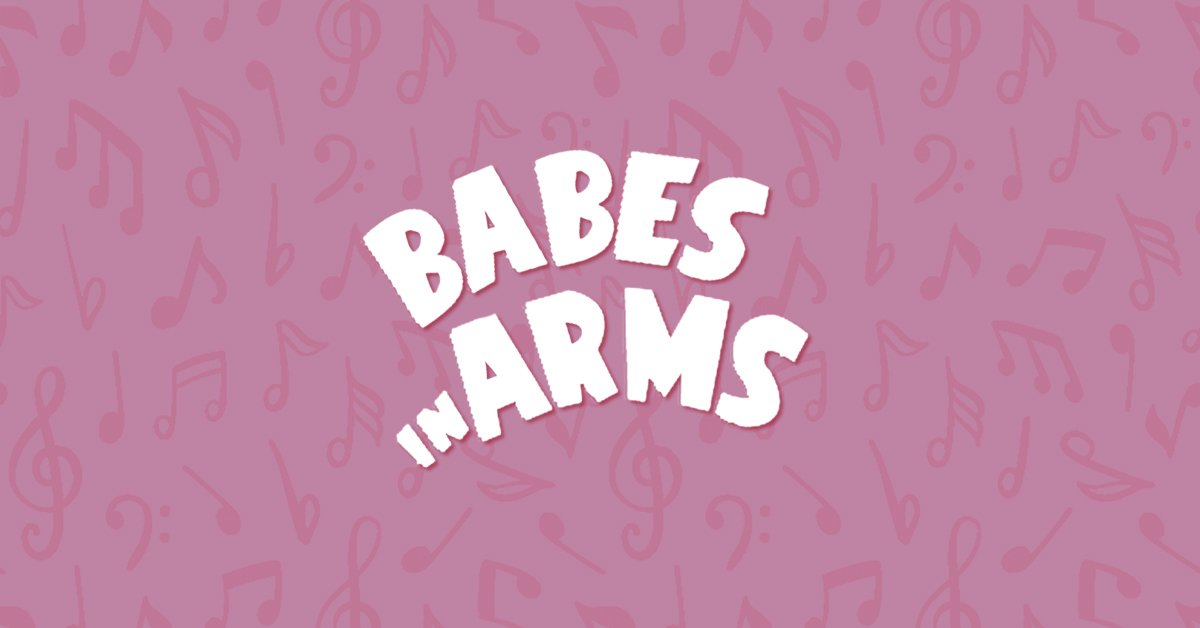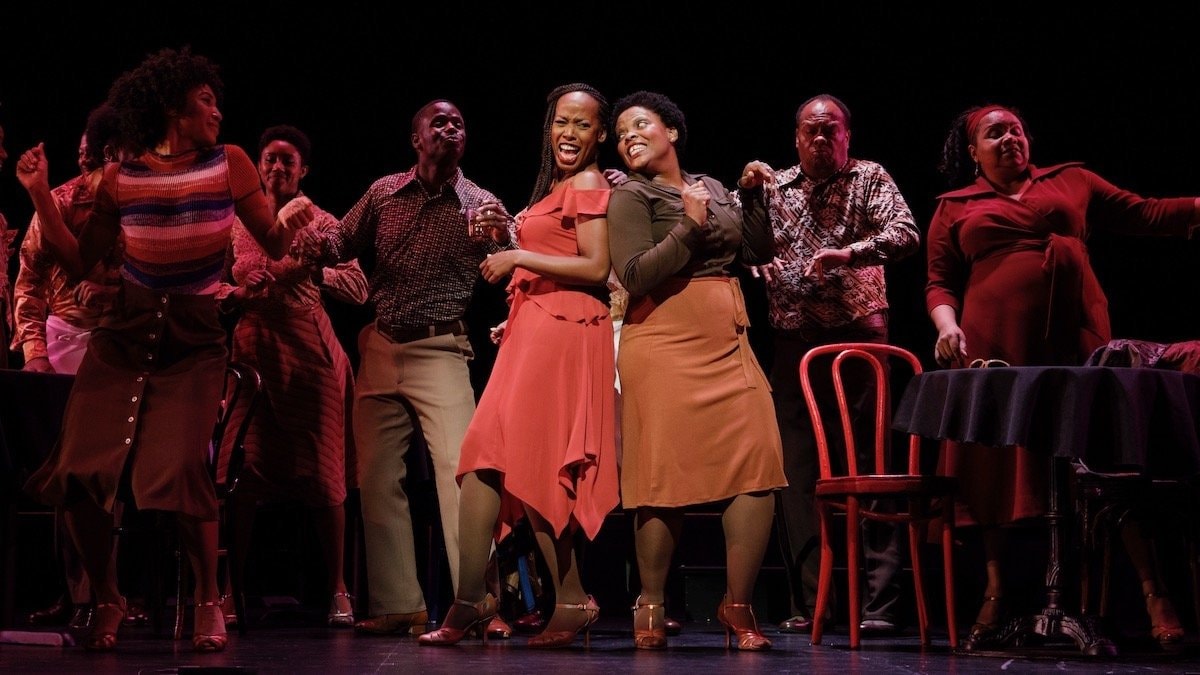
Hailed as one of the finest musical comedies of its era, Babes in Arms (US/UK) by Richard Rodgers and Lorenz Hart introduced several timeless tunes to the American songbook, including “My Funny Valentine.” Follow along with an in-depth exploration of the piece’s music and lyrics — press play on the video and scroll on!
Babes in Arms is the quintessential “Hey, kids, let’s put on a show!” musical. In context, “My Funny Valentine” is literally about Valentine “Val” LaMar, the show’s dopey and charming protagonist. Val and his leading lady Billie, who found love at first sight, are fighting — Val is jealous after seeing another man with Billie’s lipstick on his lips. Val and Billie argue about the morals of the show they’re presenting, and Val storms out, calling Billie an opportunist. Left alone, Billie sings about their relationship.
“My Funny Valentine” was penned in 1937. Composer Richard Rodgers brings timeless, romantic music to the piece, lined with aching melodic leaps that tug at the heart. Lyricist Lorenz Hart contributes an “I love you anyway” love song lyric; rather than idealizing Val, Billie lists his faults, yet still concludes with a pronouncement of her love for him. The result is a genuine song about the reality of human love. To date, there are 1,073 known recordings of “My Funny Valentine,” and it is included on thousands of albums.
Although the Frank Sinatra recording omits the following introduction, or “verse,” the section provides context in understanding Billie’s emotional journey. Note the heightened, classical language (“doth,” “thou”) distinguishing the introduction from the rest of the song. With this language, the singer playfully sets the listener up for a formal, traditional musical piece.
Behold the way our fine-feathered friend
His virtue doth parade.
Thou knowest not, my dim-witted friend,
The picture thou hast made.
The ambiguous harmony at the start of the introduction indicates the character’s uncertainty and emotional conflict. The meandering between diminished and dominant sevenths chords muddles the establishment of the home key. Historically, people have associated diminished chords with melancholia and sadness. The harmonic rhythm (the rate at which the chords change in relation to the rate of notes) is slow and steady, which invites audiences to enter the singer’s state of mind.
Thy vacant brow and thy tousled hair
Conceal thy good intent.
Thou noble, upright, truthful, sincere
And slightly dopey gent — You’re…
In the 1990 New Jersey Symphony Orchestra recording featuring Judy Blazer, the sparse instrumental accompaniment, with the oboe playing in unison with the protagonist, is occasionally embellished at the ends of phrases with flutes and celeste. It gives audiences a glimpse of the character’s inner thoughts. Will Friedwald, in his book Stardust Melodies, suggests that this unique instrumentation perhaps pays homage to the earlier baroque operatic recitative style, in which a singer imitates the rhythm of ordinary speech, accompanied by limited instruments. The music serves the pure and direct meaning of the lyrics and the naivete without over-the-top adornment.
Transitioning from the verse to the refrain, the lyric switches from the formal “thou” and “thy” to “You’re,” indicating a change in tone and attitude. The ensuing lyrics are simpler, less arch and far more sincere.
My funny Valentine,
Sweet, comic Valentine,
You make me smile with my heart.
Something has clearly shifted in the singer. In addition to the change in language, the song’s pace moves from a fluctuating, lighthearted rubato (“stolen” time, or freedom of tempo) in the verse to an assured, steady rhythm, grounding the body of the song and making the title phrase land with confidence. The quick, conversational notes of the introduction – which suggest intellect over emotion – shift to long, languid notes, indicating a greater depth of feeling and emphasizing heart over mind.
The refrain can be broken down in four sections: A-A’-B-C. The melody of the A section (“My funny valentine”) is mainly scalic, rising and falling within the set of musical notes of a scale, without introducing any notes that are not a member of the scale or mode. Part of the refrain’s charm lies in the tension between the verbal pronouncement of love (“You make me smile”) in contrast with the somber, ambiguous (is it in a minor key, or a major key?) and scalic tune.
Your looks are laughable,
Unphotographable,
Yet you’re my fav’rite work of art.
The second section’s melody (“Your looks are laughable,”) is shifted up a minor third to establish the tune’s primary motif and to make it more memorable for audiences. Rodgers varies the ending of the phrase with a flattened seventh at “of” in the vocal line. Like stretching a rubber band, this flattened seventh highlights the contrast between bittersweet music and the sugary meaning of the lyrics (“you’re my fav’rite work of art”).
Is your figure less than Greek?
Is your mouth a little weak?
When you open it to speak,
Are you smart?
The gradual sequence of rising intervals in the B section (“your fig-,” a fifth; “your mouth,” a seventh; “you o-,” an octave) and the falling back to the mediant (the third scale degree of a musical scale) further highlights Billie’s uncertainty. Interestingly, the rather wide leaps are put in the middle of the question rather at the end. It perhaps gives an ironic connotation on the negative characteristics of her lover — these questions are asked with a bit of a wink to them. The phrase that follows resolves the irony; though her Valentine isn’t perfect, Billie loves him as he is.
But don’t change a hair for me,
Not if you care for me.
Stay, little Valentine, stay.
Each day is Valentine’s day.
In the final section, (the C section) – the melody rises to the highest note of the whole piece at “stay, little Valentine, stay” and returns to the home chord (tonic). It highlights the emotional intensity of the singer and drives to the climax of the song where she begs her lover to stay with her. This is highlighted by the dynamics (variations in volume) as it is the most emphatic point of the song, with the accompaniment marked forte (loud) and fortissimo (very loud). The song gradually resolves to the relative major chord at the end. This concluding chord — a satisfying release of the song’s tension between adoration and questioning — also marks a moment where the music and lyrics finally land together.
The song’s unique harmonic sequence and hauntingly bittersweet melody launched “My Funny Valentine” from a fleeting song in a musical comedy into an enduring jazz standard. It became one of the signatures of trumpeter Chet Baker to showcase his mellow singing and trumpet playing.
Rodgers & Hart’s delicately balanced, sorrowful music and lyrics continue to draw artists to re-record “My Funny Valentine.” It will remain in the American songbook for years to come.
…
To learn more about Babes in Arms, or to license a performance of the show, visit Concord Theatricals in the US or UK.
“My Funny Valentine” by Richard Rodgers and Lorenz Hart ©1937 by Chappell & Co., Inc. Copyright Renewed. Copyright Assigned to Williamson Music and WB Music Corp. for the extended renewal period of copyright in the USA. International Copyright Secured. All Rights Reserved. Used By Permission.

Recommended Shows for Drama Festivals

The Truth Behind… The Normal Heart




